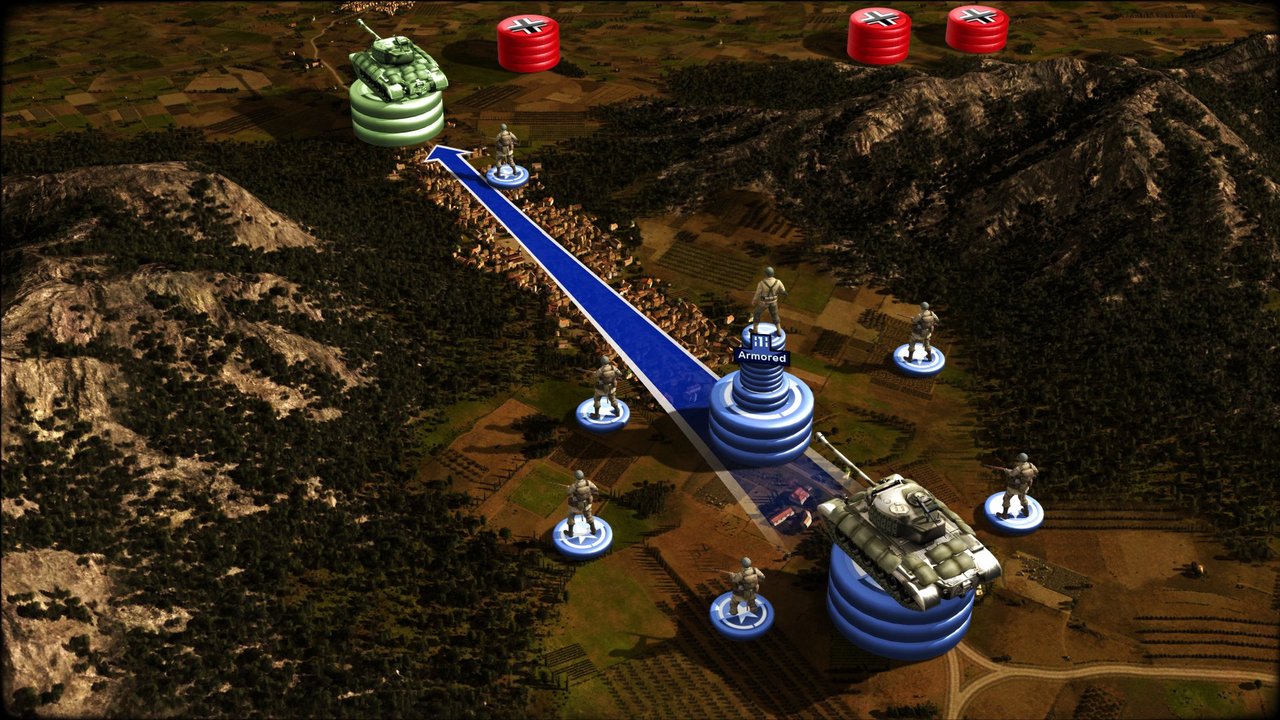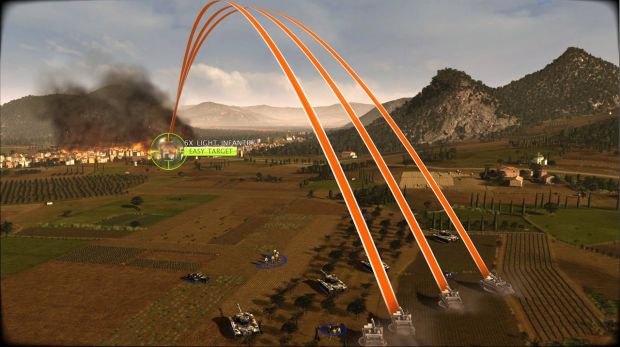Let’s imagine for a moment that board games as you know them have changed. They no longer are turn based. They don’t require a dice roll or spinner wheel to determine movement. They only consist of strategy, deception, and careful play of your cards. By this new standard of tabletop gaming, R.U.S.E. would fit right in.
R.U.S.E., from developer Eugen Systems, takes all the loved systems from board games, throws them in a blender with standard RTS elements, and adds a dash of speed, blending the whole thing together to make a game that will be familiar on the surface, but reveal a deep and fresh experience for RTS fans. If Risk was played in real time and took place during World War 2, you would have R.U.S.E. I was fortunate to play a few games in the title’s recent multiplayer beta and I came away pretty blown away by what I played.

The way that R.U.S.E. plays and looks is vastly different than most RTS games out there. The objective of the match is to take your opponents’ HQ or to gain more points than your opponents. You will do this by building bases, deploying units, and destroying the enemies’ bases and units. Each unit you perish or building you capture adds to your point total. Take the enemy HQ or have the highest point total and you win. While this sounds familiar, the way the game goes about it makes for a faster-paced game than other RTS. Every building in the game is immediately built once your engineer arrives at the location you set the structure at. This means the closer the building is to your HQ, the faster it will be built. As you expand your base, you can place Secondary HQs closer so that your supply trucks and engineers can get to their destinations faster. Each supply depot (resource nodes) in the game is preset on the map, so you’ll have to capture them to start a steady stream of income to your base. Supply depots have limited resources, though, so you won’t be able to turtle it out and let your resources gather. Once they deplete, you’ll need to capture your opponents’ or branch out to others to keep the cash flow incoming. This limited economy per game also affects the other part of R.U.S.E., your units.
Having a limited economy means you can’t just spam units; that will make you bankrupt very quickly. Instead, you need to carefully plan your strategy, build the right units and smartly position them. Each unit has their pros and cons, and is able to traverse different environments. Infantry are faster on roads, but can setup ambushes in forests and towns; tanks can quickly move over any terrain but have trouble in forests. This dynamic features heavily in your strategy, as a cheaply produced infantry unit can take out a medium tank in an ambush, or a strategically placed artillery gun can rain death on your opponent as they struggle to maneuver tanks around the forest you placed it behind. Using the map and the right units for each situation is a big part of the game’s strategy.
But the game wouldn’t be called R.U.S.E if there wasn’t some dirty dealing or deception involved, and it’s the main hook and a big influence on the game’s tabletop feel. As you wage war, you will gain ruse cards that offer different effects to deceive your enemy or rally your army. Maps are divided into sectors and you’ll play your ruse cards in these sectors to initiate their effects. There are 10 ruse cards in all to use: Decryption reveals all enemy orders, Spy Plan reveals all enemy units, Radio Silence hides all your units, Dummy Building builds a dummy building that your enemy thinks is real, Camouflage Net hides all building and units, Decoy Offensive builds decoy tanks, infantry, and aircraft to fool the opponent, Blitz speeds up all units, Terror makes the enemy much more likely to flee, Fanaticism makes your units stay and fight instead of fleeing, and Reverse Intel shows light units as heavy and vice versa. These cards can turn the tide of battle if need be and are very useful in tricking or distracting the other player. I had another player place a dummy building next to one of my supply depots and it prompted me to quickly build an armor base and produce tanks. After I attacked the dummy building and realized it was a fake, they had already captured two supply depots and had a few tanks approaching my base. Because I wasted money building that armor base I couldn’t retaliate in time.

With all this card dealing, back stabbing, and fast-paced combat, R.U.S.E is a perfect fit for competitive gaming. The developers realized this and built a robust stat tracking system into the game, which builds an online persona for each player, adding experience for every game you play, win or lose. It tracks everythings you do and shows your ranking in all the game modes. Looking at my game persona, I see a ranking system for 1v1 and 2v2 Championship Leagues, so Eugen Systems knows what kind of experience they are shooting for and we’ll have to see how they implement leagues or tournaments. It will also feature achievements for players to gather.
R.U.S.E is shaping up to be a very fun and competitive multiplayer game a la Warcraft 3 mod, Defense of the Ancients, or the original StarCraft. The game’s combination of fast-paced gameplay and board game aesthetic lend itself really well to this type of gaming culture. No word on the single-player mode though, but Eugen Systems has stated that it will be a deep and full-featured campaign. It’ll be interesting to see how the ruse cards will play into deceiving the computer, but the game is set to be very multiplayer focused and wears that badge proudly. R.U.S.E. is set for release on June 8, 2010.

















